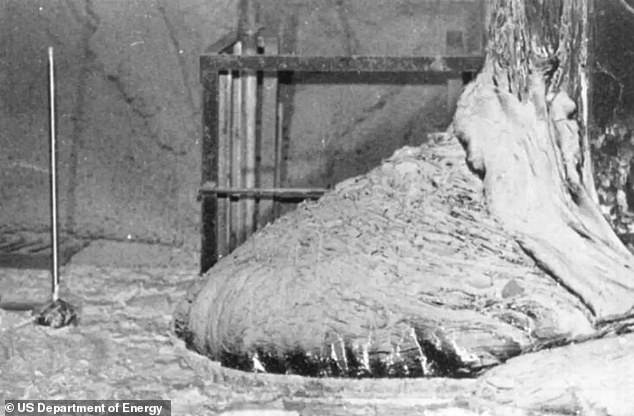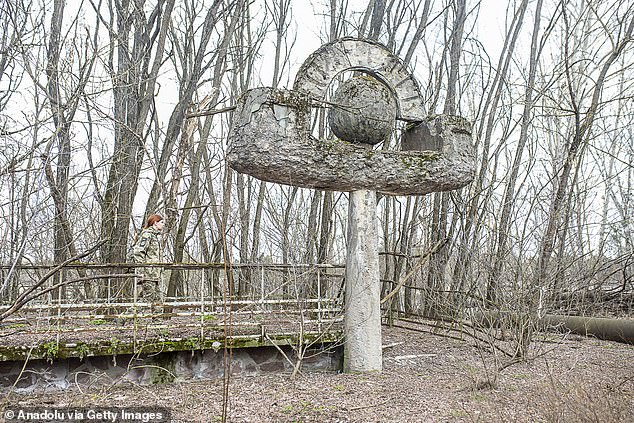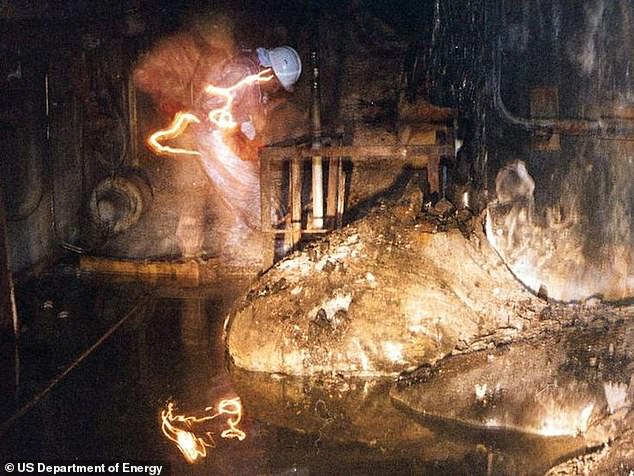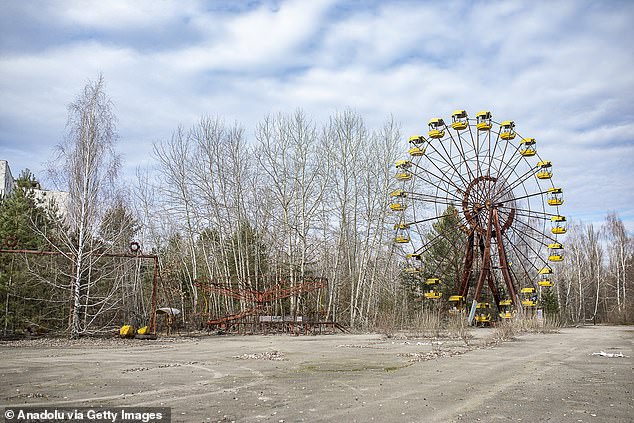Revealed: The most dangerous object on Earth that can kill you in two days if you look at it for just five minutes
It may sound supernatural, but there is one very real object that is so deadly that just looking at it can kill you.
Just 300 seconds in the room with the so-called ‘Elephant’s Foot’ means you only have two days to live.
This deadly mystery is a two-meter-wide lump of solidified lava formed from the molten core of the Chernobyl nuclear reactor.
Due to the intense radiation, only a handful of photos of the elephant’s foot have ever been taken.
Even now, almost forty years after the meltdown, entering the room containing this object could be fatal and the threat could persist for centuries.
The Elephant’s Foot is one of the most dangerous objects on earth. It is a solid mass of molten nuclear material from the Chernobyl nuclear power plant in Ukraine

In April 1986, the Chernobyl nuclear power plant in Ukraine experienced an unexpected heat wave during a routine test. The resulting meltdown was one of the worst nuclear disasters in human history
On April 26, 1986, reactor number 4 at the Chernobyl nuclear power plant in Ukraine experienced an unexpected power surge.
When emergency shutdown procedures failed, temperatures in the core rose even higher.
By the time the control rods, which slow the reaction, were inserted, it was too late and the intense temperatures caused the rods to crack.
Soon the cooling water evaporated, causing pressure to build until the reactor itself exploded in the worst nuclear disaster in human history.
As emergency responders fought to control the radiation that fall, they discovered that a room beneath the reactor had become one of the most dangerous places on Earth.

In this photo taken by the US Department of Energy ten years after the disaster, the Elephant’s Foot can still deliver a fatal dose of radiation within an hour
The reactor became so hot that the steel and concrete used to shield the core melted into radioactive lava.
Despite what the first cleanup crews thought, this material was not actually nuclear fuel from the reactor.
When the core became critical, it simply melted the materials it housed, which slowly fell through the bottom of the reactor.
As it worked its way through the pipes and concrete of Reactor 4, the material absorbed more components, transforming it and turning it into a complex mess of radioactive chemicals.
When this mixture of sand, concrete and nuclear fuel finally cooled, it solidified into a new material called corium.
One mass of corium, which fell through the steam passage beneath the reactor, became known as the Elephant’s Foot because of its distinctive shape.

After the disaster, the area around the power plant was declared an exclusion zone. The intense radiation forced thousands to leave their homes, creating ghost towns
In 1986, the elephant’s foot emitted 10,000 x-rays (a measure of radiation) per hour – about 1,000 times the dose needed to cause cancer.
For context, one hour of radiation at that level would be the equivalent of four and a half million chest X-rays.
After 30 seconds of exposure, you would experience dizziness and fatigue within a week.
After two minutes in the room, your cells begin to bleed and after four minutes vomiting, diarrhea and fever occur.
Ultimately, after just five minutes, you would almost certainly die two days later.
When the cleanup crew, called “liquidators,” arrived, they discovered that the Elephant’s Foot was still far too radioactive to approach.

When the Elephant’s Foot first formed, just five minutes in its chamber could cause fatal radiation poisoning. In this photo, taken ten years later, the radiation is still so high that it disrupts the film in the camera

Radiation levels in Chernobyl (pictured) are gradually decreasing, but the Elephant’s Foot could remain dangerous for decades
Using a hastily mounted camera on wheels, the crew was able to take a photo of the base.
Ten years later, the US Department of Energy, which extensively documented Chernobyl, managed to obtain some photographs of the Elephant’s Foot.
In some photos of the Elephant’s Foot you see a man in an orange jacket, believed to be Artur Korneyev, the deputy director of Shelter Object.
Artur took this photo of himself using a camera with a time delay to limit his exposure to radiation.
By then, the corium blob was emitting about one-tenth of the radiation it had originally had.
Artur actually survived the experience, making hundreds of trips to visit the disaster site and seeing more of the Elephant’s Foot than any other person.
According to a local newspaper, he was still living in Ukraine in 2021, but it is not known whether he is still alive.
However, even 500 seconds of exposure would cause mild radiation sickness, while an hour would be fatal.
Radiation levels near the Elephant’s Foot remained so high that it interfered with the film used to photograph it.
In 2016, a concrete and steel shelter called the New Safe Confinement was placed over the reactors to prevent further leaks.
This was reinforced with a steel structure to ensure that uranium dust would not be dispersed in the event of another explosion.
Because corium is so rare and has only been produced five times in history, no one knows exactly how the elephant’s foot will change over time.
While the nuclear material slowly cools, it will likely remain dangerous for many years.
